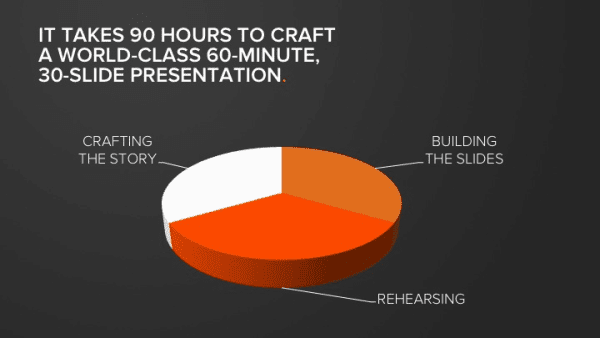public speaking
Seven Public Speaking Tips From World-Class TED Presenters
Who wouldn’t want to get a crowd jumping up and down like Tony Robbins, or inspire an entire audience like Barack Obama?
You’d never know it, but most of these world-class TED speakers were made, not born. As with learning any new skill, you need to go to the best and model their path.
Here we have compiled the best public speaking tips from world-class TED speakers. Study these tips, and you could be the next world-class public speaker.
1. Show up to give, not to take
It’s not uncommon to see speakers get up on stage solely to sell their products or books. It’s blatantly obvious.
These are what Simon Sinek, a world-class speaker, calls “takers.” He elaborates by saying: “We are highly social animals. Even at a distance on stage, we can tell if you’re a giver or a taker, and people are more likely to trust a giver–a speaker that gives them value, that teaches them something new, that inspires them–than a taker.”
2. Focus on your breath to stay focused
Think about the last time you were nervous or had your adrenaline going.
Whether you were aware during that experience or not (most people aren’t), your breathing was likely shallow. This makes it difficult to not only breathe, but it only increases your panic of nerves.
TED speaker coach, Gina Barnett, recommends: “Take three or four conscious, evenly-paced, smooth inhalations and exhalations. Let the belly go and let the breath go all the way down into your abdomen. This can center your energy and focus your thoughts.”
3. Leave the slides for the boardroom

The best speakers in the world–Tony Robbins, Gary Vaynerchuk, Simon Sinek–don’t use slides in their presentations.
They are the slides, and more.
“The single most important thing you can do to dramatically improve your presentations is to have a story to tell before you work on your PowerPoint file.” -Cliff Atkinson, Beyond Bullet Points
This isn’t to say that there’s nothing wrong with using a presentation deck, you just need to have a captivating story to tell, whether you decide to use a presentation deck or not.
4. Use plain English

The key to figuring out how to improve your communication skills? Simplicity.
When Steve Jobs introduced the iPod, he could have talked about the long battery life, the ability to hold X gigabytes of music files, and the lightning-fast transfer speeds. But he didn’t use any of the typical technical words that a normal CEO would use.
Instead, Jobs said: “iPod. One thousand songs in your pocket.”
Upon closer look at Jobs’ presentation, his “headlines” solely consisted of powerful, memorable, specific statements that consistently add up to fewer than 140 characters.
Ask yourself: are you describing your product or idea in a “feature” format, instead of focusing on the vision?
5. Leverage the power of the pause
Most amateur speakers start out in their speaking career using “um” and “ah”, which create a nervous atmosphere around you. But the best TED speakers leverage the power of pausing, which gives the speaker enough time to think about his next statement, while creating a more dramatic effect.
Going back to Steve Jobs, in his famous 2005 Stanford University commencement address, “How To Live Before You Die,” he paused nine times in the first minute alone.
This may feel uncomfortable to a lot of first-time speakers, but there’s many ways to overcome this awkwardness. Gina Barnett calls it “focusing out.” She explains: “Pick anything–like the color green–and look all around you to see where you spot it in the room. Or pick an object to observe. Notice what shoes people are wearing, or who is wearing a watch. Or try paying attention to how light reflects off surfaces.”
6. Embrace the art of the unexpected
The magic, and the potential downside, of a live presentation is that anything can happen. Literally anything.
From the slides not being formatted correctly to the mic dying in the middle of your presentation, you have to be prepared for just about anything.
The key is to embrace the unexpected, and be able to improvise with the flow of events happening, rather than be taken by surprise.
7. Get the audience involved
How do you remember more information? By immersion.
The human brain was not naturally developed to learn through lectures. In fact, the National Training Laboratories came up with what’s now known as the “Learning Pyramid.” Their research findings discovered that humans retain:
5% of what they learn when they’ve learned from a lecture (i.e. university/college lectures)
10% of what they learn when they’ve learned from reading (i.e. books, articles)
20% of what they learn from audio-visual (i.e. apps, videos)
30% of what they learn when they see a demonstration
50% of what they learn when engaged in a group discussion.
75% of what they learn when they practice what they learned.
90% of what they learn when they use immediately (or teach others)
This means that no matter how great your presentation is, if your audience is not learning through immersion and interaction, they’re only going to retain a small fraction of your powerful message.




